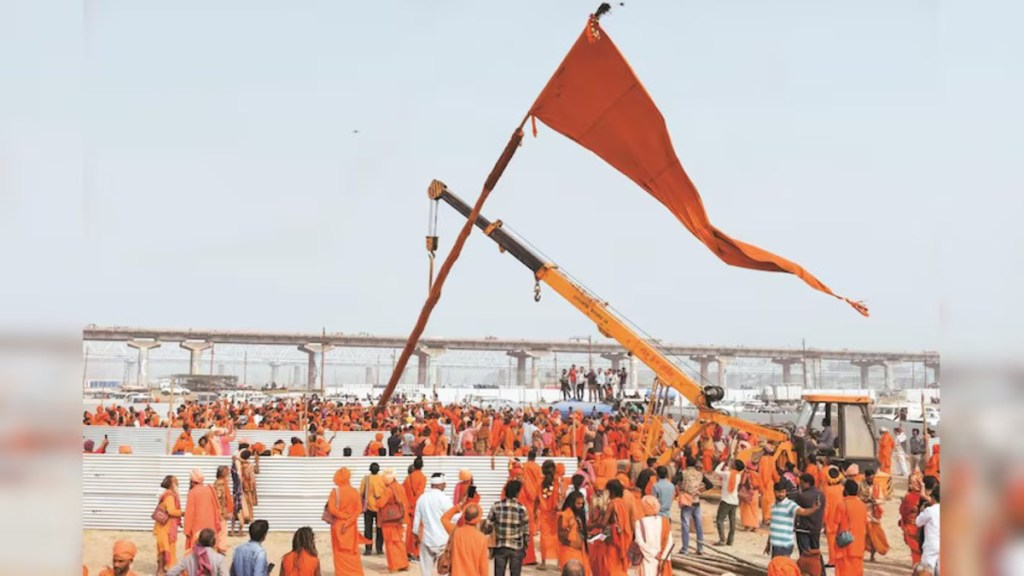The upcoming Maha Kumbh, scheduled from January 13 to February 26, 2025, will feature advanced security measures, including drones capable of monitoring both above and below the water. The event, expected to draw over 45 crore pilgrims, will be one of the largest religious gatherings in the world.
For the first time in Uttar Pradesh, underwater drones will be deployed at the Sangam, the confluence of the Ganges, Yamuna, and mythical Saraswati rivers. In addition, tethered drones will provide aerial surveillance. These cutting-edge drones will ensure comprehensive security coverage throughout the event.
The state’s security apparatus will also include the deployment of an anti-drone system, which was successfully used during the Ram Temple consecration ceremony in Ayodhya earlier this year. This system, alongside the underwater and tethered drones, will play a crucial role in ensuring the safety of pilgrims.
Underwater drones, capable of diving up to 100 meters, will provide continuous surveillance in the waters, even under low-light conditions. They will transmit real-time data to the Integrated Command and Control Center (ICCC), which will help authorities respond swiftly to any suspicious activities.
“This state-of-the-art underwater drone can dive up to 100 meters and transmit real-time activity reports,” said Rajeev Narayan Mishra, Inspector General of Police (Eastern Zone, Prayagraj), during the recent launch of the high-speed drone. “It can be operated over an unlimited distance and helps monitor any underwater incident or threat.”
In addition to the drones, over 700 boats, manned by personnel from the Provincial Armed Constabulary (PAC), National Disaster Response Force (NDRF), and State Disaster Response Force (SDRF), will be stationed to monitor the waters. To enhance safety further, remote-controlled life buoys will also be in place.
The anti-drone system will play a vital role in safeguarding the skies during the Maha Kumbh. Using radar, it will scan for unidentified aerial objects, and if a potential threat is detected, high-resolution sensors will evaluate the nature of the object. Countermeasures, including jamming radio frequencies, can disable rogue drones that might carry dangerous payloads or surveillance equipment.
Tethered drones, which will operate at altitudes of up to 120 meters, will provide real-time aerial views of the vast congregation. These drones will also help monitor crowd movement, identify bottlenecks, and quickly respond to emergencies. “Equipped with high-definition cameras, these drones offer live feeds to the ICCC, assisting officials in managing crowd flow and ensuring prompt action if required,” said a security officer. “They will also extend their coverage to critical areas such as railway stations, bus terminals, and airports.”
To further enhance security, AI-enabled cameras will track crowd movements, predict congestion, and enable real-time headcount. Facial recognition technology will be employed to identify individuals in large crowds, bolstering security. “AI systems act as technological eyes, enabling authorities to address challenges before they escalate,” the officer explained.
Uttar Pradesh Chief Minister Yogi Adityanath has stressed the importance of using cutting-edge technology to ensure the safety and efficiency of the Maha Kumbh. “The CM wants the Maha Kumbh to set a new global standard for security, combining modern systems with the event’s traditional essence,” an official said.
Given the scale of the gathering, security risks remain a concern. “We are leaving nothing to chance. With over 40 crore visitors expected, even a minor lapse could have significant repercussions,” the officer added.
With the integration of drones, AI, and advanced surveillance systems, the 2025 Maha Kumbh aims to set a new benchmark for safety and operational excellence at one of the world’s most significant religious events.
(With PTI Inputs)

